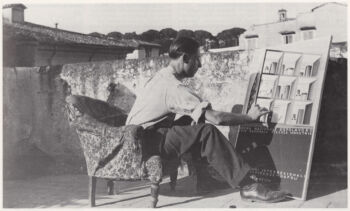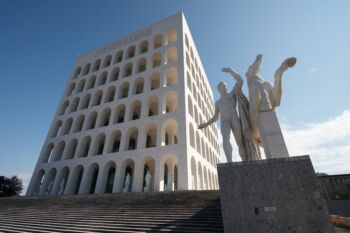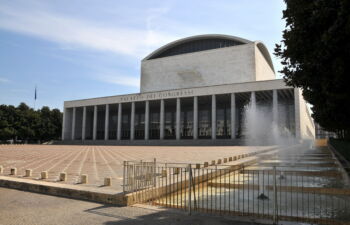Adalberto Libera was one of the key figures in the Italian Rationalism. Considered a protagonist of Italian modern architecture, he’d become the protagonist of several projects built under the Fascist regime.

Image source:https://search.creativecommons.org/photos/8d124c94-5cd2-4326-b1d1-10016bacc8f2 by POET ARCHITECTURE
Important Friendships: a Link with Fascism

Image source: https://search.creativecommons.org/photos/563baa44-24d4-43db-9307-432c621c54f3 by ivtoran
Adalberto Libera was born in Villa Lagarina in Trentino, Italy. After graduating from Parma’s Institute of Art first, then from Rome’s Scuola Superiore di Architettura, he came into contact with Futurism, leading to his founding M.I.A.R. or “Italian Movement for Rational Architecture”, where he acted as its secretary. This group, a rival to the fascist architecture – oriented organization Gruppo Sette, was led, during Fascism, by Libera’s politically astute choices: he established a close working relationship with high ranking officials of the regime, in order to control and funnel funding into public construction programs and commissions. In no small part thanks to this, he attained a prolific career, designing many notable buildings this period, enstablishing himself as a key figure in the international Rationalist movement. Congress Arena in Rome is a perfect example of Libera’s notable ability to design ambiguously in a spare, metaphysical language, existing between Modernism and Neo-classicism. Other renowed designs are Casa Malaparte and the Regional Government building for the region of Trentino, continuing his career after the fall of the Fascist regime until his death, in 1963.
Between Futurism and Classicism
The Rationalist ideals prospered in Italy under the twenty years of Fascist regime, from the 1920s to the 1940s. Two separate groups challenged each other in an architectural battle for recognition: the Gruppo 7 and the (Libera founded) MIAR. The latter movement sought a middle ground between the glories of the Enlightenment, embodied by the Neo-classical style, and the straightforward violence of Futurism, an avant-garde movement fascinated by the industrial architecture. The new tenets, in accordance to the regime’s pretense, were control, logic and rationality.

Image source: https://search.creativecommons.org/photos/6e399ff7-e12e-4cf6-a987-7e5f22ee1e54 by aleske
Palazzo Gualino in Turin was one of the first Italian rationalist buildings, designed by Gino Levi-Montalcini and Giuseppe Pagano. Other exemplary works include Casa del Fascio in Como, the Medaglia d’Oro room at the Italian Aeronautical Show in Milan and the Fascist Trades Union Building in Como. Moreover, the Rationalists enjoyed some official commissions from the very junta of Mussolini. Large projects arose all over Rome, including the University of Rome and the Esposizione Universale Roma (EUR) district. The EUR features monumental, monolith-like buildings, trying to evoke the same weight as ancient Roman architecture, yet condensed in an essential form, revealing strong geometric, modern shapes.
Congress Arena
This institutional space was design by Alberto Libera to hosts the 1942 Universal Exposition in Rome. Construction was cancelled due to the outbreak of World War II, and finished about a decade later. Libera was inspired by the Pantheon, and designed the structure with a noble and elegant appearance, combining modern lines with a classical sense of grandeur. Columns and othertraditional elements are mixed with a modern, essential and geometric taste, in order to underline the pure form of the structure silhouetted against the sky.

Image source: https://search.creativecommons.org/photos/c6d13939-7a10-4a3a-9495-2598dabdb087
Info sources:
https://en.wikipedia.org/wiki/Rationalism_(architecture)
https://en.wikipedia.org/wiki/Adalberto_Libera
https://www.wetheitalians.com/web-magazine/adalberto-libera
https://en.wikipedia.org/wiki/Palazzo_dei_Congressi
https://romeonrome.com/2016/01/mussolinis-architectural-legacy-in-rome/
